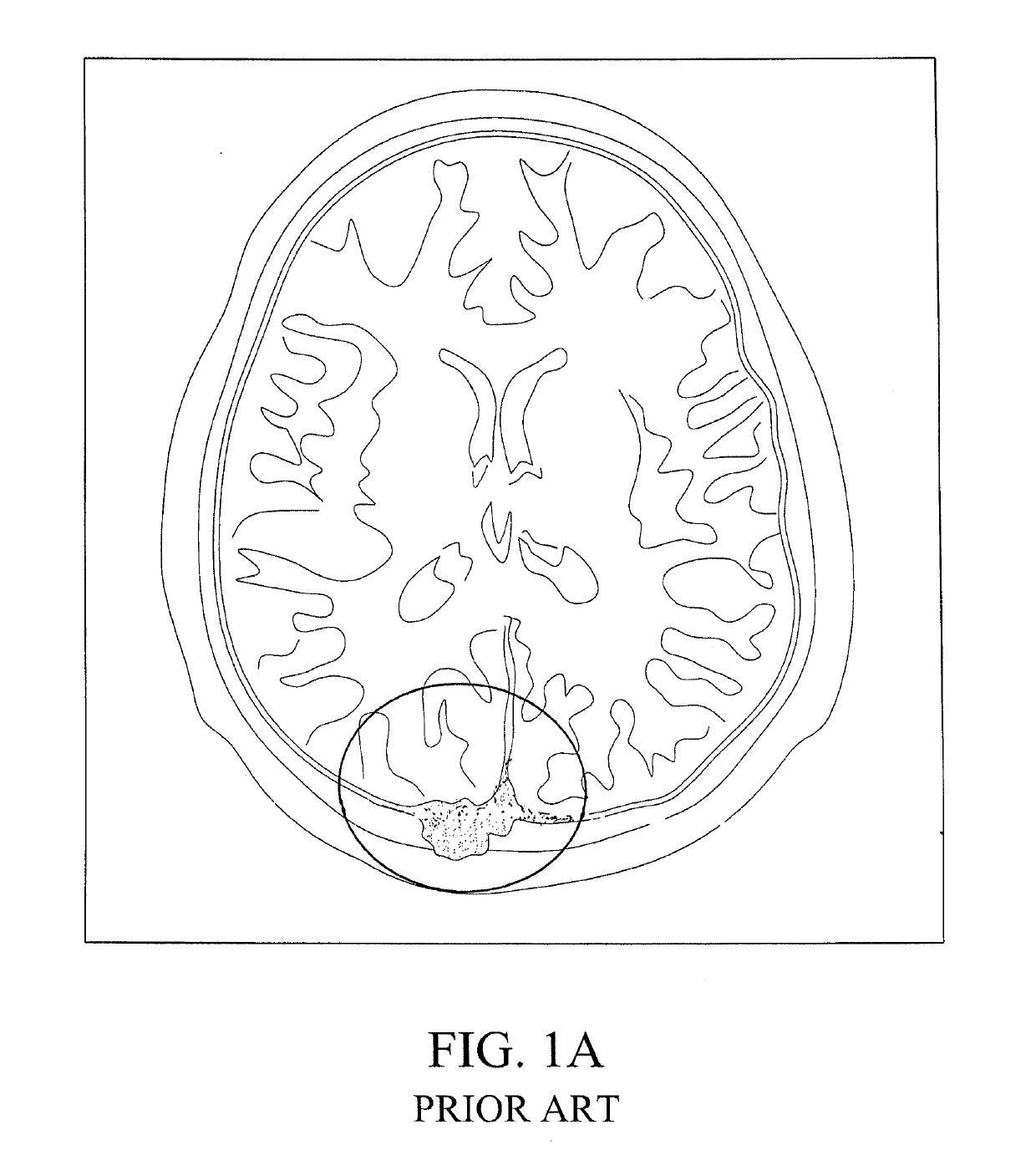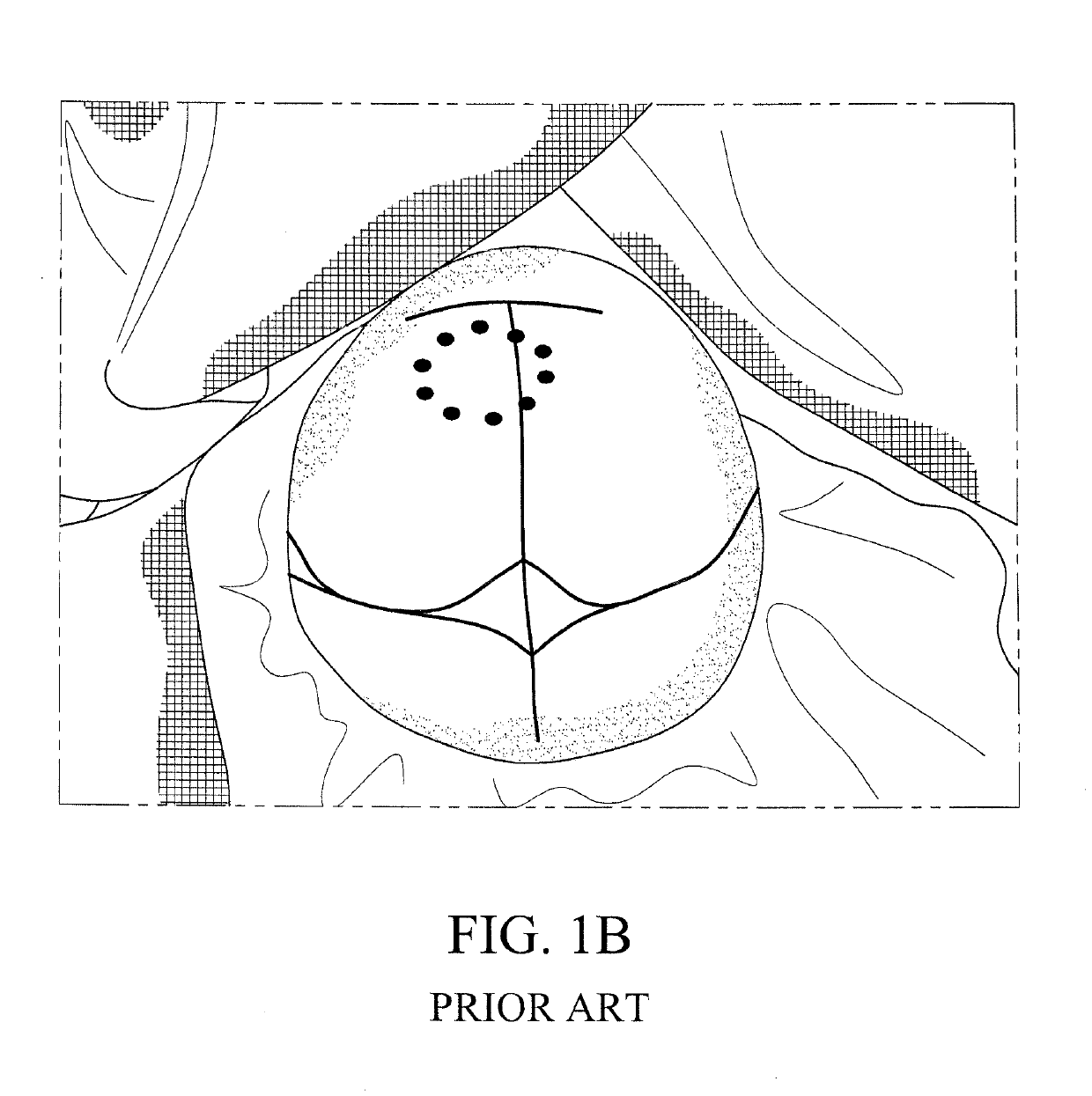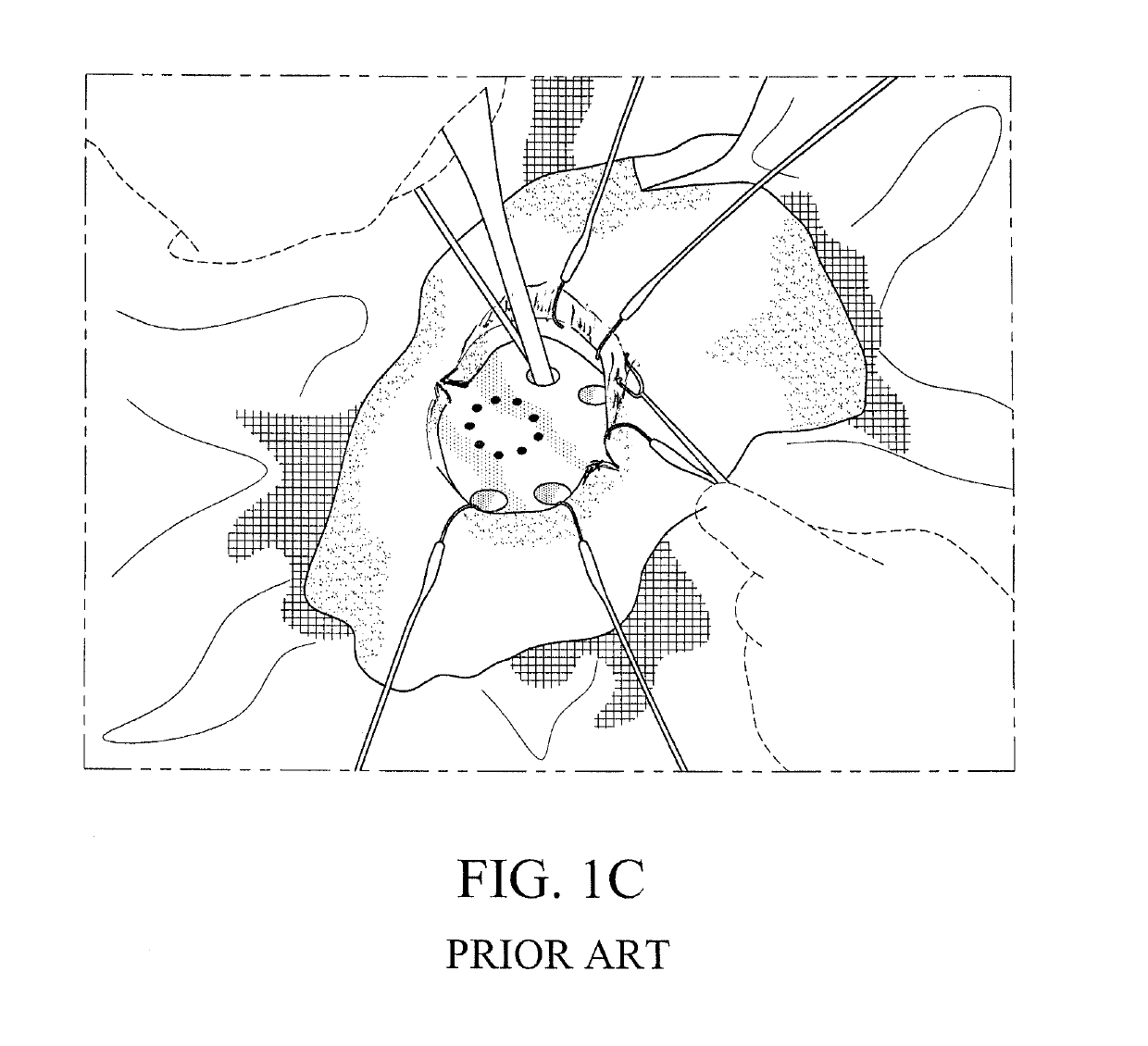Method for performing single-stage cranioplasty reconstruction with a clear custom craniofacial implant
a craniofacial implant and single-stage technology, applied in the field of surgery, can solve the problems of high risk of scalp extrusion when placed under thin and/or irradiated scalps, visible deformities, and/or scalp irregularities in the anterior craniofacial region, and achieve the effects of increasing complexity and artistic demand, increasing risk of resulting deformities, and increasing difficulty
- Summary
- Abstract
- Description
- Claims
- Application Information
AI Technical Summary
Benefits of technology
Problems solved by technology
Method used
Image
Examples
Embodiment Construction
[0052]The detailed embodiments of the present invention are disclosed herein. It should be understood, however, that the disclosed embodiments are merely exemplary of the invention, which may be embodied in various forms. Therefore, the details disclosed herein are not to be interpreted as limiting, but merely as a basis for teaching one skilled in the art how to make and / or use the invention.
[0053]Referring to FIGS. 3A-3G, 4A, 4B, and 5, the present invention relates to a novel method for performing single-stage cranioplasty with “clear” customized implants (see for example, FIGS. 3C and 3D showing the clear custom craniofacial implant 10 held directly above a skull tumor defect following extirpation (that is, the cranial, craniofacial, and / or facial defect 100 as discussed below) prior to single-stage modification). As explained above in the Background of the Invention, the method of “single-stage cranioplasty” is defined as a surgery where the surgeon intends to create a complica...
PUM
 Login to View More
Login to View More Abstract
Description
Claims
Application Information
 Login to View More
Login to View More - R&D
- Intellectual Property
- Life Sciences
- Materials
- Tech Scout
- Unparalleled Data Quality
- Higher Quality Content
- 60% Fewer Hallucinations
Browse by: Latest US Patents, China's latest patents, Technical Efficacy Thesaurus, Application Domain, Technology Topic, Popular Technical Reports.
© 2025 PatSnap. All rights reserved.Legal|Privacy policy|Modern Slavery Act Transparency Statement|Sitemap|About US| Contact US: help@patsnap.com



